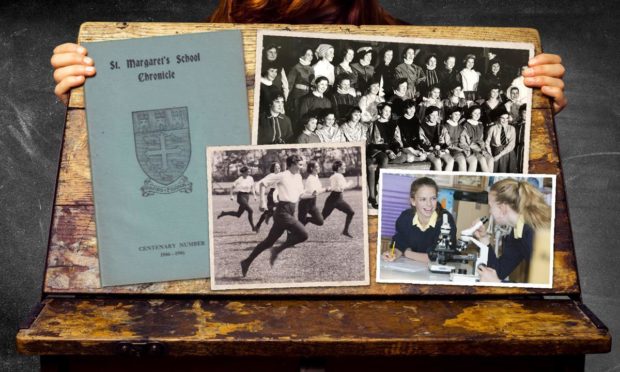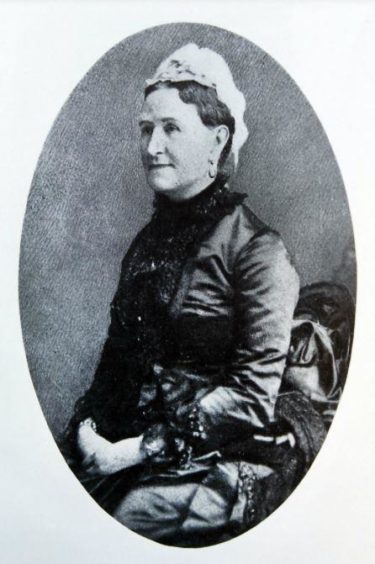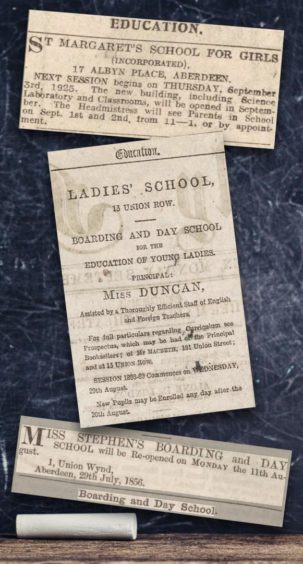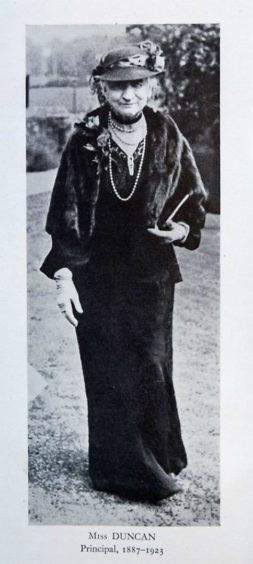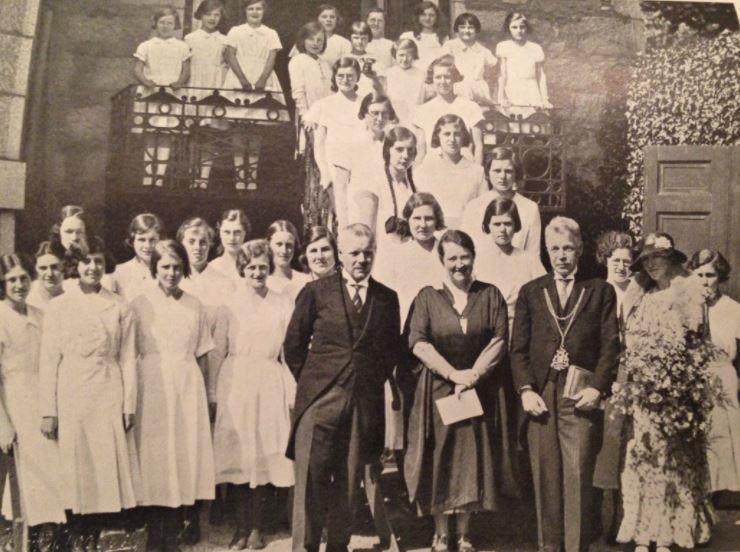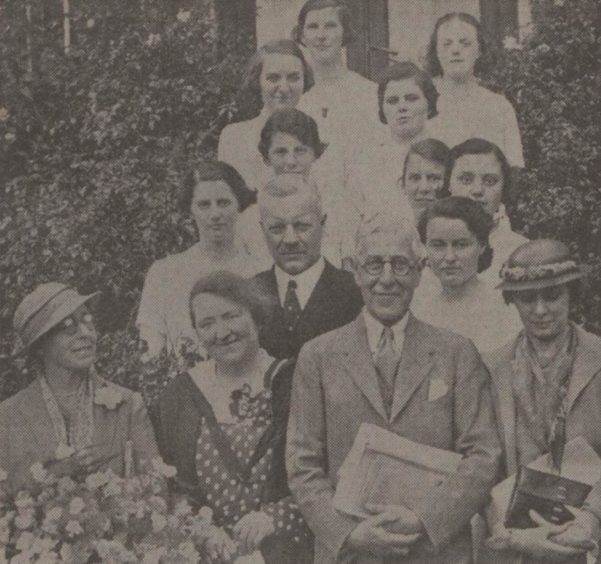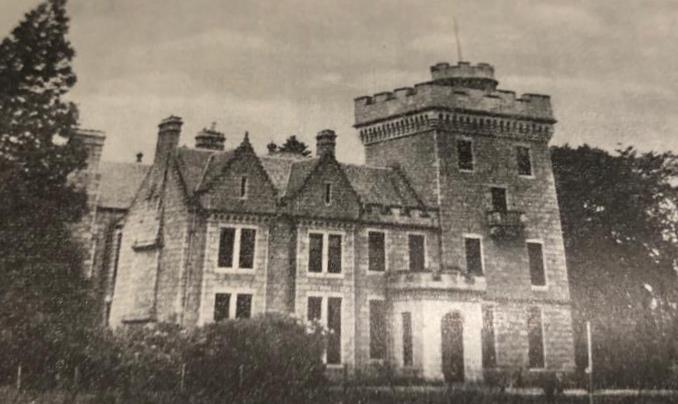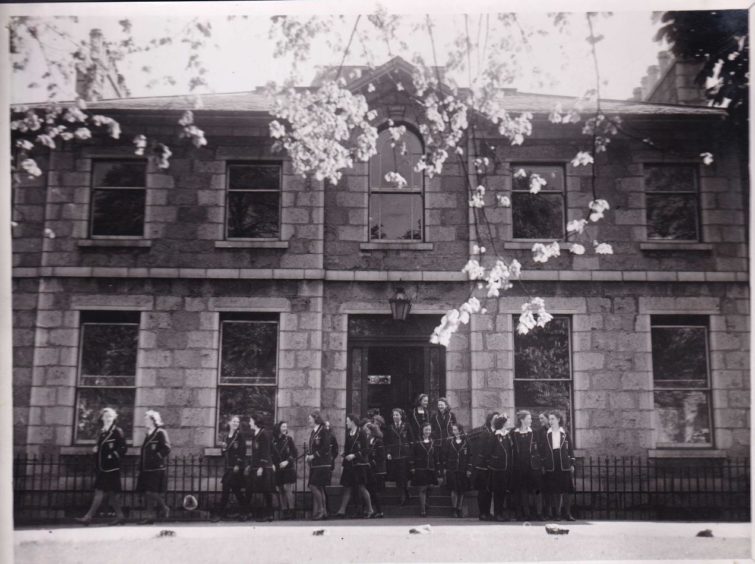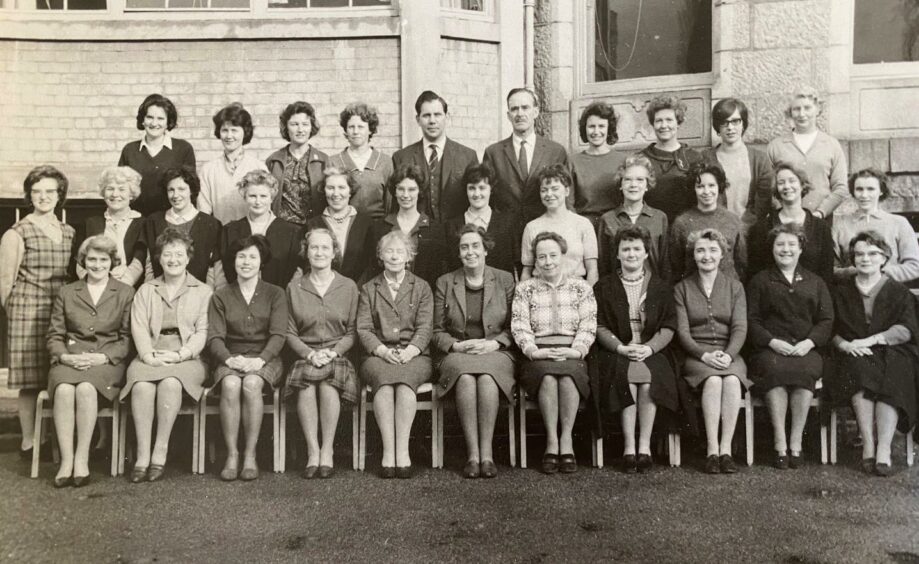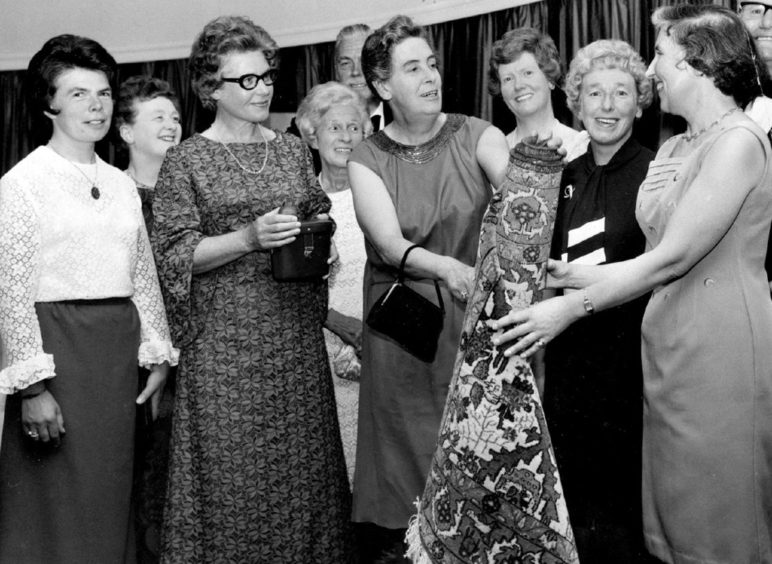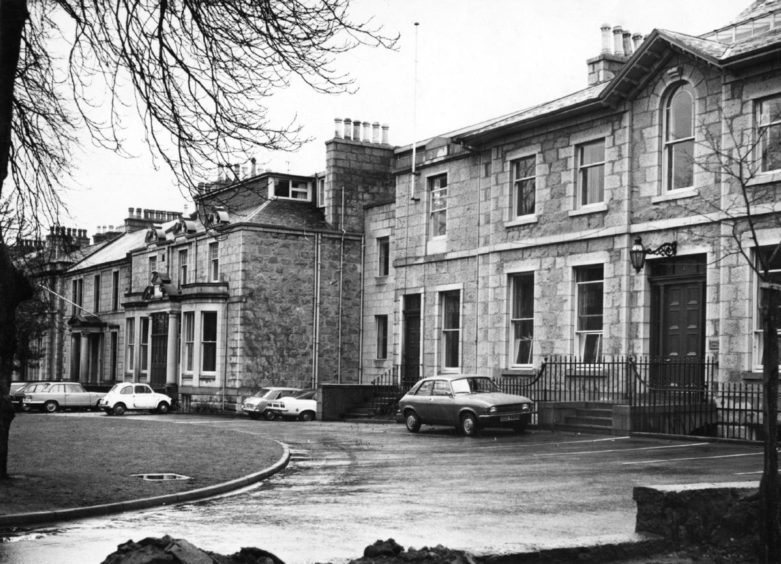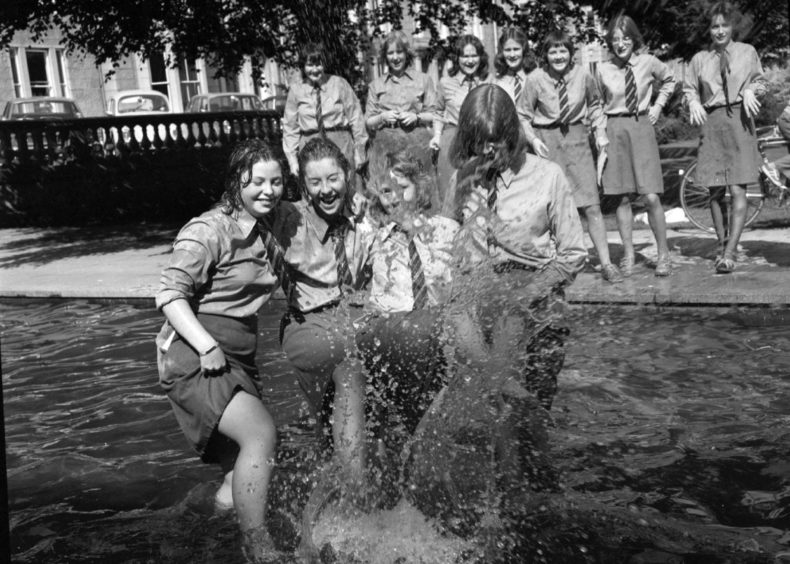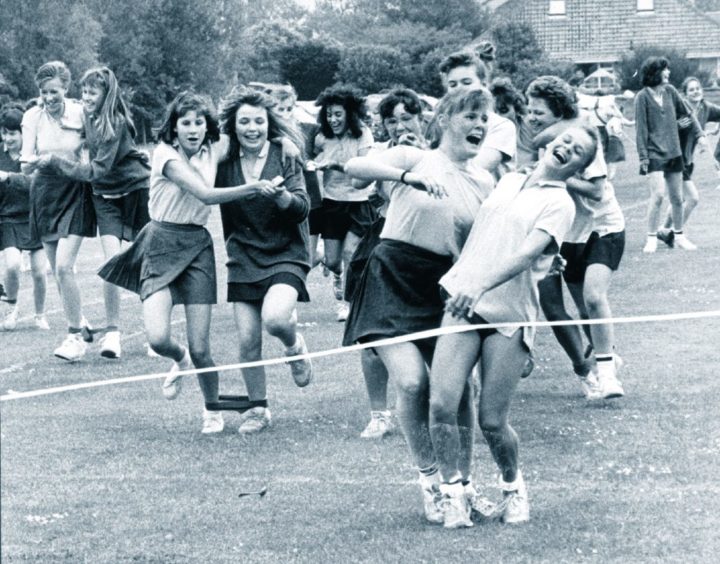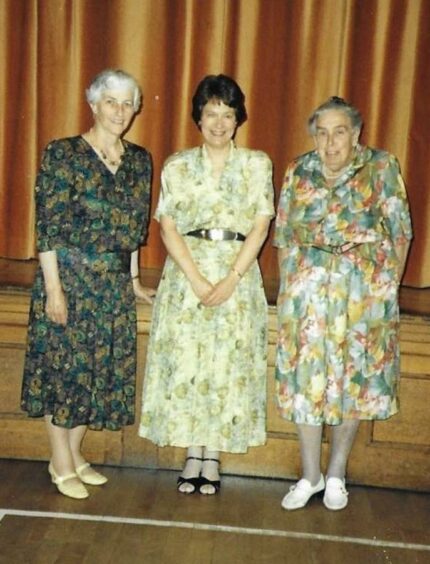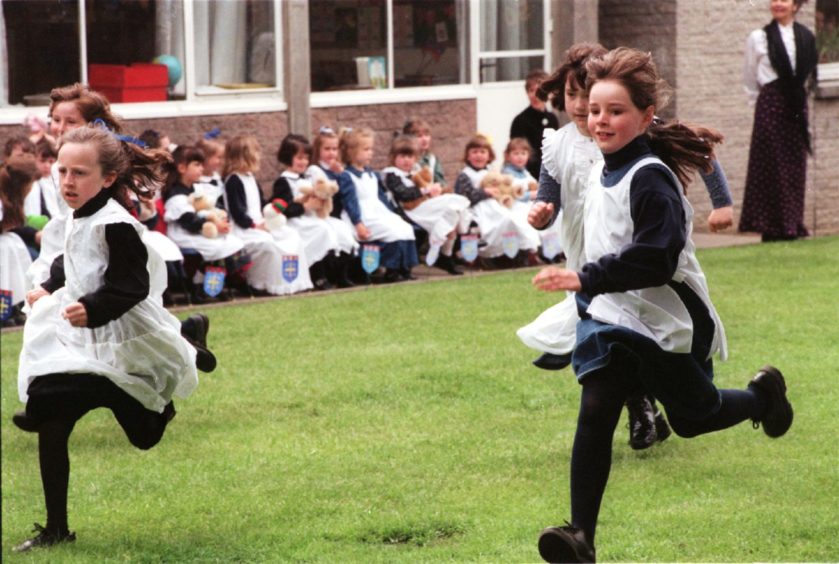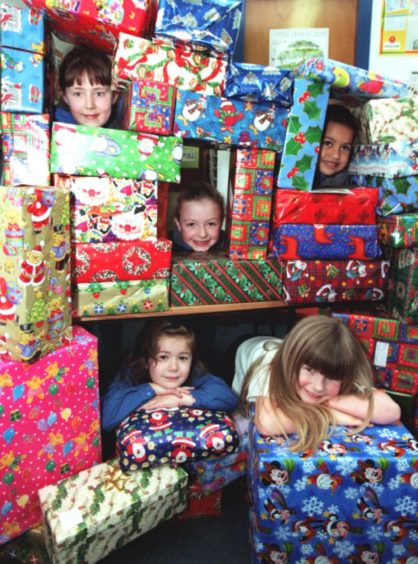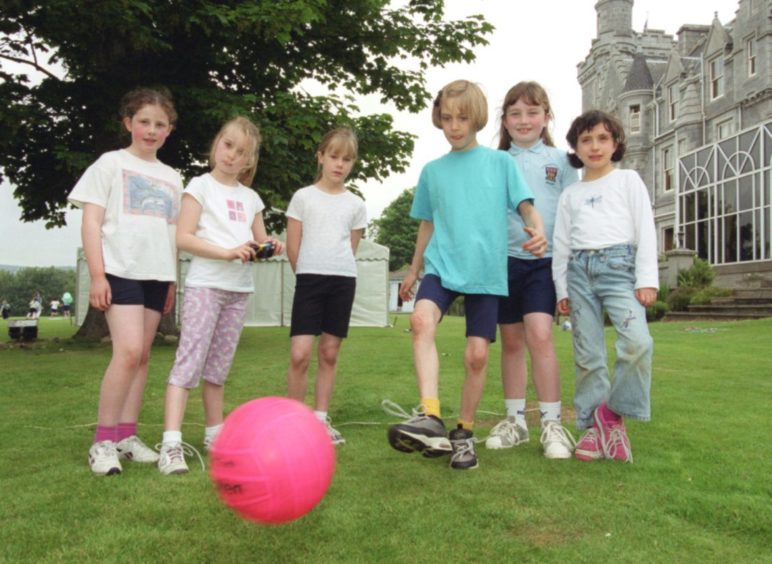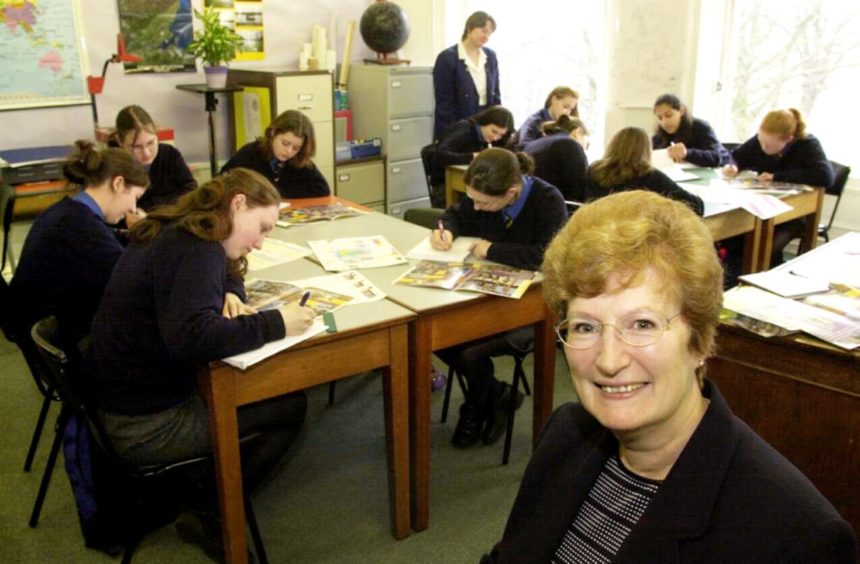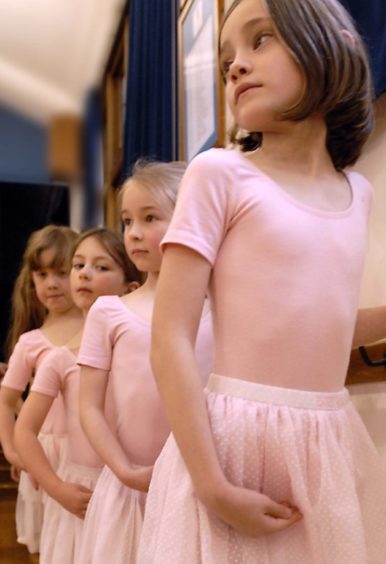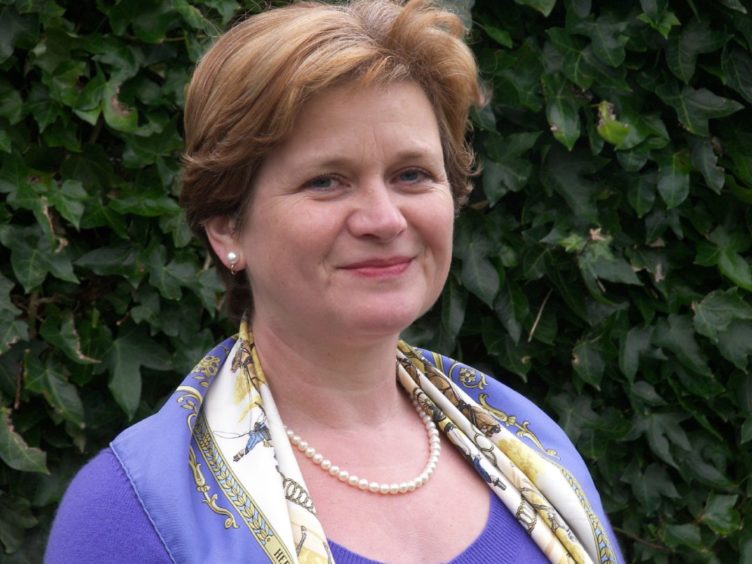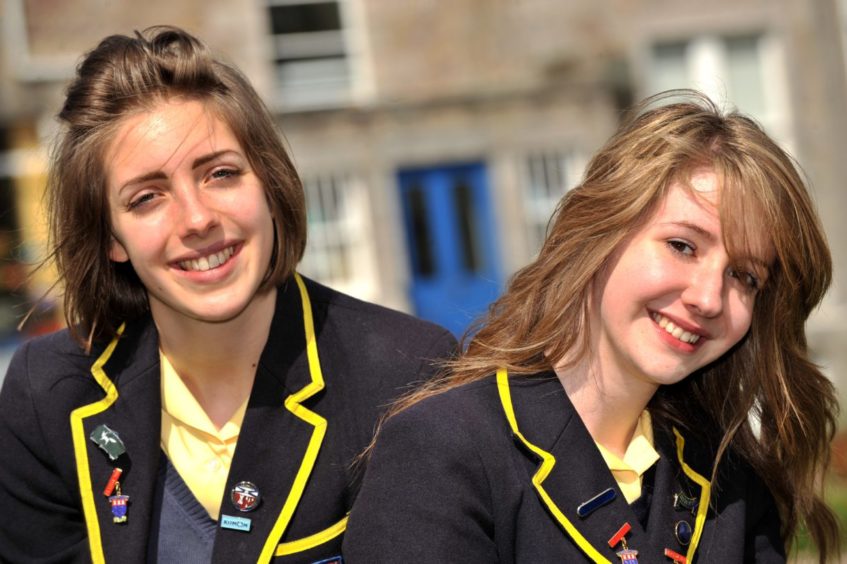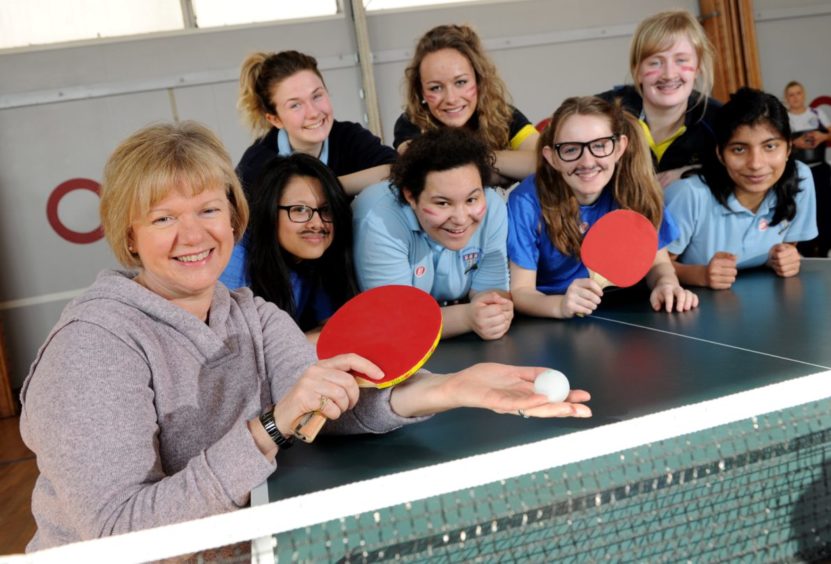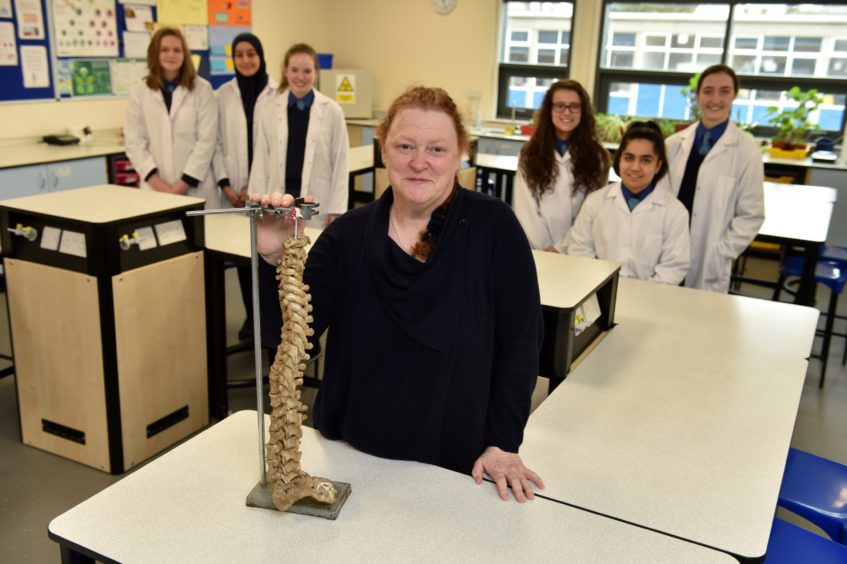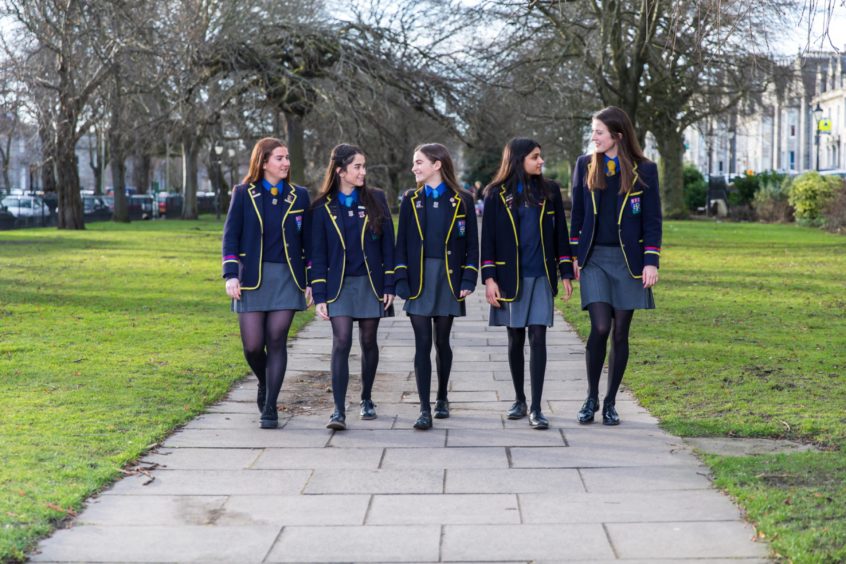St Margaret’s School for Girls in Aberdeen is celebrating 175 years of pioneering girls’ education.
Founded in 1846, it remains Scotland’s oldest all-girls school, and has enjoyed a long and proud history of being led by astute women.
Once you’re a St Meg’s girl, you are always a St Meg’s girl.
This sentiment was captured at the centenary celebrations in 1946.
Reflecting upon the school’s first 100 years and people that had come and gone, a poignant speech said: “The threads of the past were combined in the present-day pupils, and with them would spread out again through the world.
“They were St Margaret’s School, and wherever they went, they would still be part of the school.”
The historic Aberdeen institution has stood the test of time, surviving two world wars and, in later decades, attempts to overhaul the private school system.
Now, St Margaret’s is proudly celebrating a milestone 175 years since its humble beginnings.
A thriving school
St Margaret’s can trace its establishment to the drawing room of a West End house, the family home of Miss Stephen and her parents at 1 Union Wynd.
Aged just 21, Miss Stephen founded a girls’ day school in 1846, a decade later it also became a boarding school.
At a time when boys’ education was considered more important than girls’, Miss Stephen had the foresight to teach her scholars writing and languages in addition to typical ‘feminine’ subject like sewing and music.
A decade later, the expanding school moved to premises at 13 Union Row where boarders could also be accommodated.
Miss Stephen retired in 1874, and the Reid sisters took up the mantel for four years before it was passed to Mary Andrew who was head teacher until her death.
A formidable tutor who favoured an immersive approach to languages, Miss Andrew insisted her pupils spoke French at mealtimes and during set hours in the evenings.
And those scholars who slipped up were faced with a fine!
Another pair of sisters – Isabella and Jean Duncan – took on the headship of the school in 1887, and its continued success saw another move, this time to 31 Union Grove.
Dress and discipline became a staple of the school day and the establishment continued to thrive.
Regular advertisements appeared in the Press and Journal promising a well-rounded education from “a thoroughly efficient staff of English and foreign teachers”.
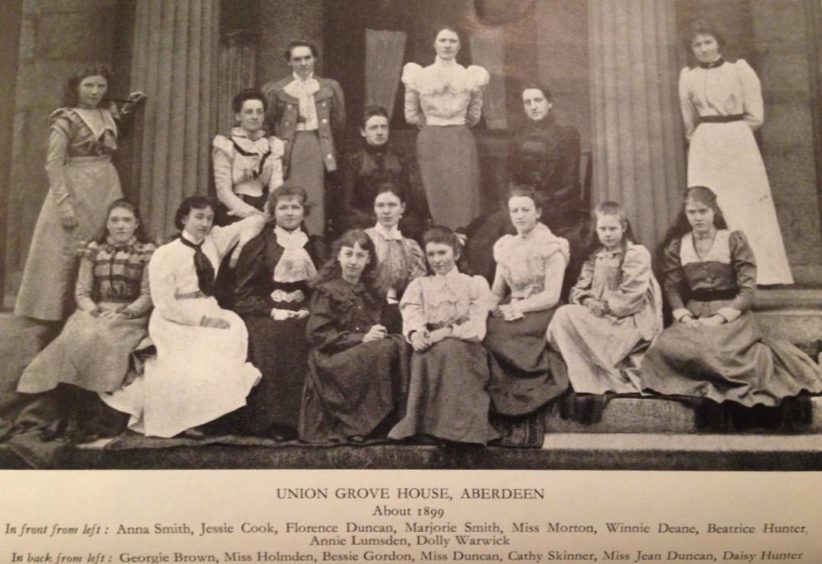
Under the tutelage of the Misses Duncan, the boarding and day school made its final move in 1890 to 17 Albyn Place, where its roots have long since established.
The school took on a new identity, St Margaret’s School for Girls, named after the pious Scottish Queen, Saint Margaret of Scotland.
A new century for St Margaret’s
The turn of the century brought more change and in 1923 Miss Bell was appointed as a new leader for the now independent school.
Miss Bell oversaw a radical transformation at St Margaret’s; the traditional drawing room became a gymnasium, and with it came a concerted effort to establish a sporting tradition.
More commonly the preserve of boys, the girls at St Margaret’s now took part in sports days, gymnastics displays and racquet sports.
Pupils were encouraged to strive to reach their full potential not only in the classroom, but on the sports pitches too.
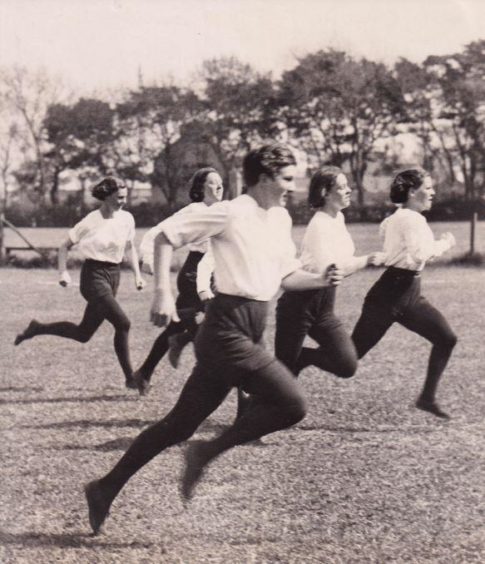
Miss Bell left St Margaret’s to take up a headship in Helensburgh, and under her seven-year tenure, was praised for fostering “a tradition of social service, wide culture and broad human outlook amongst the girls”.
The school council unanimously appointed the Cambridge-educated and “widely travelled” Mabel Holland as a successor.
While upholding the “high ideal” set by Miss Bell, Miss Holland paved her own way.
In 1937, the forward-thinking Miss Holland oversaw the opening of a nursery at St Margaret’s, an occasion she described as a “long cherished dream”.
And while continuing the first-class education the school was becoming renowned for, Miss Holland was ahead of her time when it came to inclusivity.
At speech day in 1937, she said: “The minds of the girls in this school are as different as their faces and it is our aim to provide an education that shall bring out the best of all types, not only of the academically-minded.”
By 1939, storm clouds gathered over Europe and the widespread persecution of Jews by Nazis spurred Aberdonians to take action.
While in Italy some years before, Miss Holland had witnessed the famous march of the fascists in Rome, an experience she reflected on during wartime.
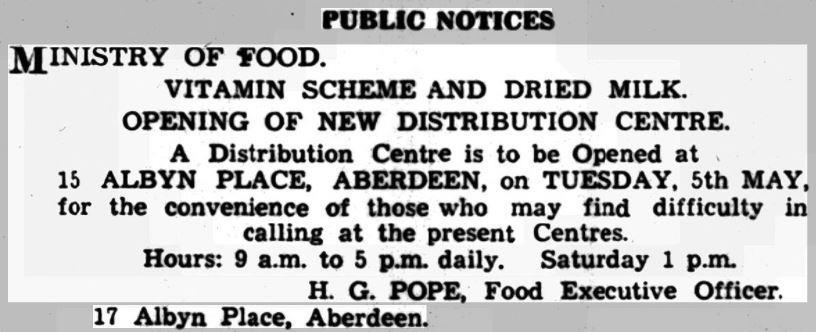
She was part of the Aberdeen Jewish Relief Committee to raise funds, gather clothes and find temporary homes for Jewish refugees.
And when war did break out, Miss Holland navigated St Margaret’s through upheaval and strife as the Ministry of Food requisitioned the school buildings for the war effort.
Working through wartime
Just as term was due to begin in August 1939, the boarders were evacuated from Aberdeen to Glenbuchat Lodge in rural Donside.
The building was so remote that in winter, supplies could only be delivered by horse and sled, and Miss Holland described how “visiting staff had to clamber over frozen snow-drifts to reach the lodge”.
As war progressed, many families were keen their girls were also evacuated from the city and increasing demand for accommodation saw the school move to Blackhall Castle in Deeside instead.
Peacetime brought celebrations to St Margaret’s and, in 1946, the school marked its centenary year.
Prior to the war, Miss Holland had spoken of a desire to increase the girls’ participation in practical and creative subjects.
To realise this ambition, a building appeal was launched as part of the week-long centenary activities.
It was proposed that numbers 15 and 17 Albyn Place were united with a new block of classrooms, a library and studio.
In 1952, Miss Holland retired and it was perhaps apt that her final act as headmistress was a turf-cutting ceremony for another extension.
The extra room was needed, as under her command, the school roll had expanded from 134 to 365.
Standing strong in face of change
Edith Currie became the school’s seventh headmistress, a post she held for 18 years until retiring in 1970.
She guided pupils through a change in the exam system that saw the introduction of O-Grades, followed by a turbulent time for Aberdeen’s private schools.
In the late 1960s, it was recommended to the Scottish Secretary that grant-aided schools should become comprehensive and non fee-paying.
Miss Currie raised concerns about the impact of losing single-sex schools with their smaller rolls.
But despite the uncertainty, the education and experience of St Margaret’s girls was never disrupted.
Her successor Marjorie Bosomworth, a former student of Miss Currie’s, took up the reins in 1970.
And Miss Bosomworth also had to negotiate wider calls for modernisation in the education community.
A bid was made in the late 1980s to merge St Margaret’s with Aberdeen’s other fee-paying schools, Robert Gordon’s College and Albyn School for Girls.
But at the eleventh hour, Miss Bosomworth withdrew her school from the negotiations.
Upon retiring in 1988, she spoke of the importance of maintaining same-sex schools in Scottish education.
And the school was not only losing a popular head teacher, but a classroom teacher too – Miss Butterworth taught first year geography throughout her time at St Margaret’s.
150 years of St Margaret’s
Steering the school into a new decade was new head teacher Lorna Ogilvie who also made a strong case for maintaining single-sex education.
Despite continuing pressure to conform to co-education in 1995, Miss Ogilvie spoke publicly of the advantages of all girls’ school in encouraging confidence and personal development.
Miss Ogilvie was at the helm for almost a decade before moving on in 1998, but was there for the school’s 150th anniversary celebrations, a particularly happy time.
The 150th year also brought a new extension to the school housing extra classrooms and a music suite.
Ahead of this year’s anniversary, Miss Ogilvie reflected upon favourite memories including carol concerts, nativities, dramatic performances and two musical tours of the US with Scottish country dancers.
She also highlighted the “astonishing” amounts enterprising girls raised for charity over the years.
She added: “Most of all I remember the girls, who made me proud in so many ways through their academic successes, sporting performances and debating skills, and especially as individuals who were kind, caring, confident and such fun to be around.”
A new millennium
Steering St Margaret’s into the new millennium was Anne Ritchie who replaced Miss Ogilvie in 1998.
A fundraising millennium celebration was held for pupils, featuring magic shows for the youngest scholars to sports events – and even the opportunity to try some car mechanics.
Around 450 pupils attended a fun day at Ardoe House to help raise money for Aberdeen’s ‘Give Kids a Chance’ campaign, a charity pupils were supporting in 2000.
Activities included a fashion and beauty workshop, self-defence classes, and even a team-building session hosted by the Royal Navy. Pupils were aiming to raise a mammoth £20,000 for charity that year.
At the time, Miss Ritchie said: “Everything went brilliantly. We raised a substantial sum of money for the charity and this was a way of celebrating the millennium.”
Just two months later Miss Ritchie resigned from her post due to personal reasons, and was succeeded by Lyn McKay.
St Margaret’s academic prowess and proud tradition of concerts and school shows continued under the headship of Mrs McKay.
In 2002, more than 85 pupils aged from four to eight brought movie magic to St Margaret’s with a performance of The Sound of Music.
From the youngest nursery children singing Edelweiss, to soloist Caroline Davidson as the Baron, the young stars brought the house down in a performance Mrs McKay said was “wonderful” and upkept the school’s proud tradition of performing.
And there was cause for celebration in 2003 when the school achieved a 100% pass rate for standard grade examinations – for the second year running.
2005 saw St Margaret’s receive high marks in an inspection which praised the girls for “high standards of behaviour and courtesy”.
It was also the year that St Margaret’s not only became the remaining all-girls school in Aberdeen after neighbouring institution Albyn began to accept boys, but was crowned the leading girls’ school in Scotland.
Mrs McKay retired in 2006 after 30 years in the teaching profession, and had overseen many innovations at the school, including the introduction of means-tested bursaries.
Anne Everest was appointed as Mrs McKay’s successor and said she was looking forward to continuing the school’s tradition of success.
And in 2007 St Margaret’s was held up as an example of the benefits single-sex education can bring, a report Mrs Everest said reflected the “consistently high level of passes achieved by our pupils during the examination season”.
In 2009, Mrs Everest left to take up a role as head teacher at St George’s School for Girls in Edinburgh.
She was replaced by Julie Land, who had been a long-standing deputy headmistress and maths teacher at St Margaret’s.
Dr Land was vocal in speaking out about the importance of recognising women in the UK workforce and as valued members of society.
Speaking in 2013, she said: “At St Margaret’s, from primary one, we show our girls that anything is possible and that they should strive for the highest goals and most ambitious career paths.
“We never speak about barriers at St Margaret’s because as far as we are concerned there are none.”
Retiring Dr Land was succeeded by present headmistress Anna Tomlinson in 2014, ahead of another period of change and innovation.
Describing her new role as a “privilege”, Miss Tomlinson oversaw the opening of the school’s new state-of-the-art science block in 2015.
It was an investment that has paid off, as it was announced earlier this year that St Margaret’s was helping to turn the tide on the lack of girls pursuing STEM subjects.
The school reported a record-breaking 66% of its pupils went into a STEM-related subject at university after leaving St Margaret’s.
At the time, Miss Tomlinson said: “We have been teaching girls for 175 years and, looking back through the school’s online archive to celebrate our anniversary, it is inspiring to see that even back in the 1940s, science was at the forefront of our education for girls.”
Last year, despite the challenges brought by the pandemic, the St Margaret’s continued to strive and was voted The Sunday Times Scottish Independent Secondary School of the Year.
And in 2021, the school has honoured its long history with a series of anniversary events reflecting its aims to support girls to achieve their full potential.
A host of inspiring women have helped marked the milestone birthday so far from the worlds of sport, science, business, journalism, social enterprise and politics – including Judy Murray and Lorraine Kelly.
Speaking earlier this year, Miss Tomlinson said: “It is a privilege to be celebrating St Margaret’s 175th anniversary this year.
“The school has gone from strength to strength, adapting to the needs of successive generations.”
- If you are a former pupil, parent or staff member of St Margaret’s you can share your own memories as part of the schools 175th anniversary archive by visiting the former pupil website here.
See more like this:
